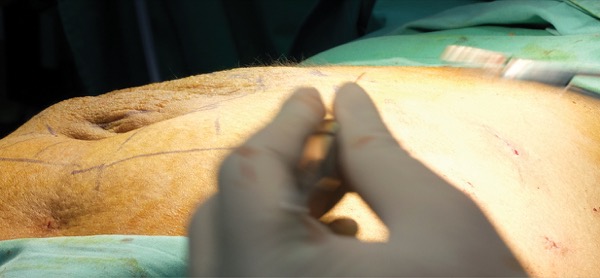Rates of mesh explantation due to infection following hernia surgery, while low, are highest among patients receiving ventral hernia repair, according to findings from a recently published study.
The report reinforces the importance of optimizing surgical approaches and working to eliminate surgical site infections (ssIs) because outcome rates varied according to the type of hernia operation, baseline patient characteristics and effectiveness in preventing infection (J Am Coll Surg 2021;232:872e881).
“This is the largest study on mesh infection, conducted in over 100,000 patients over five years with a lot of interesting findings,” said study author Kamal M. F. Itani, MD, the chief of surgery at the VA Boston Health Care System. “Unlike others in the literature, this study looks at ventral, umbilical and inguinal hernias, and gives specifics about each operation.”
Dr. Itani and his colleagues conducted the retrospective study using data from the Veterans Affairs Surgical Quality Improvement Program, as well as chart reviews of veterans who underwent abdominal or groin hernia repair that included synthetic mesh implantation, during 2008-2015.
The primary outcome of the study was to identify how often mesh explantation, caused by infection, occurred within five years following surgery. ssIs were defined as the presence of VA Surgical Quality Improvement Program–reviewed superficial, deep incisional or organ/ space ssIs within 30 days of the index operation.
A total of 103,869 hernia operations were tracked, of which 74.3% were inguinal, 10.7% were umbilical and 15.0% were ventral.
While the incidence of mesh explantation due to infection was low, occurring in 0.3% of the patients, rates were highest among patients who underwent ventral repair (1.5%), followed by those in the umbilical (0.6%) and inguinal (0.1%) groups.
Similarly, ssIs were rare yet placed the patient at a higher risk for mesh explantation. Among patients with ssIs, mesh removal occurred in 29.2% of those with deep wound infections, 22.4% with organ/space ssIs and 6.4% with superficial ssI. Staphylococcus aureus was the most common causative organism in ssIs.
While ssIs occurred within the first 30 days after the procedure, mesh explantation did not take place until a median of 208 days from the index hernia surgery. “This means that surgeons are attempting various maneuvers at salvaging the mesh over a period of seven months,” Dr. Itani noted. “We are very interested in looking at what happens between index hernia operation and mesh explantation, what measures surgeons are taking to salvage the mesh and how often they are successful.”
The researchers found that many factors influenced whether a patient was more likely to require mesh explantation. These included obesity (odds ratio [OR], 1.7), longer operations (OR, 1.83), and contaminated wound sites (OR, 2.27). Additionally, open surgery was more likely to lead to explantation than were laparoscopic procedures.
“Most hernia surgeries are elective and patients’ conditions should be optimized prior to undertaking these operations,” Dr. Itani said. “All measures of ssI prevention should be strictly observed to prevent a postoperative ssI.”
Yet, he stressed that although the risks for ssIs and related mesh explantation are real, they shouldn’t cloud understanding of the benefits of mesh usage.
“The standard of care in elective hernia surgery calls for the placement of a mesh,” Dr. Itani said. “The risk of hernia recurrence is much higher without a mesh. Despite the devastating effect of mesh infection, the risk of recurrence outweighs the risk of infection. By driving the risk of infection lower, we can further decrease the risk–benefit ratio of placing a mesh.”
According to William J. O’Brien, MS, of the Center for Healthcare Organization and Implementation Research at the VA Boston Healthcare System, who was a co-author of the study, the research also highlights the importance of such large, detailed looks at surgical risk factors.
“This study speaks to the importance of having a validated, high-quality surgical registry that allows us to study postoperative complications that are infrequent yet have severe consequences for the patient’s long-term health,” Mr. O’Brien said. “The VHA is one of the few institutions where researchers can not only identify a large national surgical population, but also combine rich clinical data to understand what is happening with these patients over a long follow-up period.”
This work was supported by an investigator-initiated award from Pfizer.


